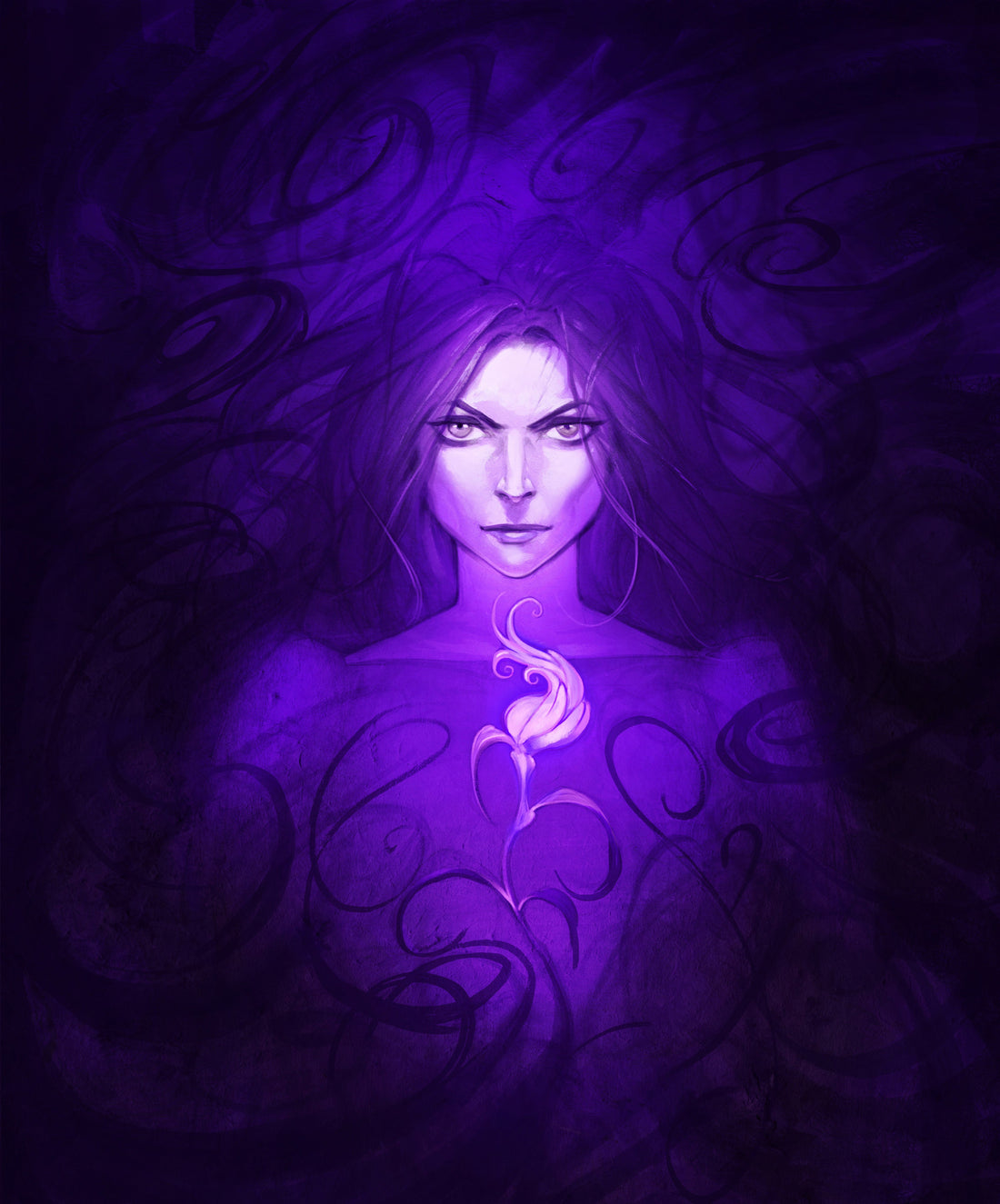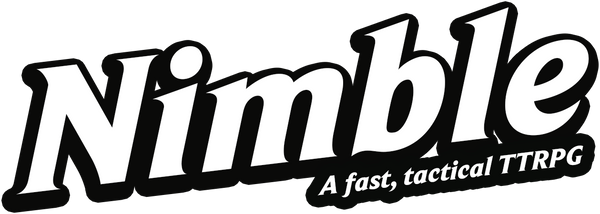
Big problems WITH 5e Spellcasters (and how to fix them).
Share
Hey, Evan here with another under the hood preview of the mechanics of the upcoming Nimble v2 project. If you missed the previous updates about what’s new and introducing the martial classes, they’re living on the new News section of the website.
Anyway, I love and hate spellcasters! The sheer amount of weird and powerful things they can do is AWESOME. But there is a problem:
SIX HUNDRED AND FORTY FIVE problems to be exact.
That's how many spells there are in D&D 5e if you can believe it (673 if you count their partnered content). In all my years I’ve never read them all—probably not even half of them. I do what likely many of you do, read 5 or 6 cantrips during character creation, get tired of that and just ask someone (or google) which ones are “the best“ and just use those.
At a certain point, having additional options makes the experience worse, not better. How many Wizards DON’T pick Fireball (and what DMs don’t begin hating it soon afterward)? It’s so far and away better than other spells at that level (and even well beyond that level!) it turns other options into “traps” or, not real options.
That’s not all, but the spell memorization and spell slot systems are so fiddly, convoluted, and confusing to many players that the less said about them the better.
But the worst part?* 3 words: Save. Or. Suck. Spells that when the PCs or Bad Guys use them successfully…completely break an encounter and suck all the fun out of the room.** If the bad guy saves or if they have legendary resistances (which, let’s be honest, they WILL), congrats, you wasted your turn and everybody’s time.
We can do better. What’s the solution?
FOCUS ON THE FUN.
We need to better focus on what is fun about spellcasters, the rest is slog.
First of all, fewer spells. MUCH fewer spells, no one reads them all, and we don’t need 300 spells that are all slight variations on “deals x damage.” A more focused spell list means the remaining ones can shine better. Each can have more utility and flavor, and you have more room for creativity.
So. The 600+ spells in D&D 5e has been drastically reduced. Redundant and trap options have been eliminated and, each spell in Nimble is interesting and useful, across every level.***
“But won’t that limit my options and be less fun.“ No. Here’s an example, take a look at the healing spells. There’s healing word and cure wounds, but also prayer of healing (overlaps with Short Rests & Hit Dice), and mass healing word, and aura of life, and lesser/greater restoration, and heal, and regenerate (and others!).
Rather than having the “ranged healing spell“ and the “touch healing spell“ and the “short rest healing spell” and the “mass healing spell” and the “fix conditions spell“ and the “big single target healing spell“ and the “heal over time spell…“ This extreme granularity is quite rigid, fiddly, and can stamp out creativity.
The Nimble version of all of those spells is this one spell:
Heal (Tier 1 Spell)
1 Action: Touch a creature and heal HP equal to 1d6+KEY (your spellcasting attribute). If 5+ mana is spent, you may also heal any 1 negative condition.
Upcast: For each additional Mana spent choose one:
• +1 Target
• +30 ft. Range
• +1d6 healing
Flexible, balanced, and it works at every level – it actually gives you more options rather than fewer all while being easier to pick up and use.
What about damaging spells?
There’s a reason every Wizard picks fire bolt. It’s the best cantrip.**** Of course players will pick the one that deals the most damage with the longest range and no drawbacks!
That’s not particularly fun though. Give me spells that are interesting to use in different situations! Spells I can COMBO with, and spells that remain useful across the level curve!

There are now 6 different spell schools (each with their own distinct flavor): Fire, Ice, Lightning, Necrotic, Radiant, and Wind. And, as for memorizing, that’s no more too. If you know a school, you can use all of the spells you’ve unlocked in that school. No more guessing which spells you’ll need!
There is no best cantrip. Different spells shine in different situations! And they scale nicely across the level curve (every 5 levels instead of randomly). Side note: the range of spells and ranged weapons has been brought down slightly to allow for a tighter, more tactical game.

Fire Spells. Deal high, consistent, damage at medium range. Some fire spells can inflict the burning condition and gain additional destructive effects against burning enemies.
Ice Spells. Deal medium damage at long range with a focus on controlling the battlefield and protecting the spellcaster. Some Ice spells have additional effects against slowed targets (a creature with their actions or movement negatively impacted: prone, restrained, in difficult terrain, etc.).
Lightning Spells. Deal the most damage at very long range but they are risky. When a spell misses, it may fail to find ground and damage the spellcaster instead!
Necrotic Spells. Summon horrible minions or manipulate and trap their targets. Some risky necrotic spells prey upon damaged creatures, sapping their very life force but frequently, fail to distinguish between friend or foe.
Radiant Spells. Can obliterate the unholy, the fearful, and those who would dare harm you. Other spells can protect, mend wounds, and can even restore creatures back to life.
Wind Spells. Aid in moving friend and foe alike around the battlefield. They can also slice and cut through entire groups of foes and viciously deal extra damage on critical hits.
What about other spells?
It’s not just about dealing damage, but doing cool utility things as well! Check these out:
Icebound Terrain (Tier 4, 2 Actions)
Effect: Concentration, up to 1 minute. The ground all around you within 90 ft. is difficult terrain. You and one ally within range are immune to this effect.
Upcasting: +1 target for each additional mana spent.
Electrickery (Tier 4, 2 Actions)
Effect: (Reaction, when an enemy within makes an attack or casts a spell within 120 ft.) Switch the places of one willing creature and another creature in range. If one was the target of an attack or effect, the other becomes the new target. An unwilling target makes a WILL save to resist. Costs 2 Mana and 1 Action instead while Dying.
Upcasting: +1 spell save DC for each additional mana spent.
Sacrifice (Tier 6, 2 Actions)
Effect: Give ALL of your remaining HP to any number target creatures within 60 ft. You may target a creature that has died in the past minute (reviving them and healing 2 levels of exhaustion from them) if you give at least 10 HP. You can not have more than 0 HP until you Long Rest.
Upcast: +30 ft. range for each additional mana spent.
Updraft (Tier 5, 3 Actions)
Effect: Target a 25 ft. square area within 60 ft. of yourself. Enemy creatures in area must roll a DEX save until they succeed. For each time they fail they are whisked into the air 30 ft. landing prone at the end of your turn (falling damage is 1d6 damage per 10 ft.).
Upcasting: +1 spell save DC for each additional mana spent.
The Nimble save spells are more rare, since saves generally take longer to resolve than attack spells, and they can have a BIG impact and create very memorable situations but they won’t ruin the fun of the game! Effects that would take away agency from the DM or Heroes are largely eliminated in favor of spells and abilities that allow for creativity and generate more fun, memorable moments.
Focus on the Fun.
Slogging through dozens of cantrips and then sorting through dozens more 1st level spells isn’t the fun part of a spellcaster. It’s overwhelming (especially to new players). “Preparing” spells and managing spells slots isn’t where the fun is either. It’s guessing and book keeping. How you use your cool spells both inside and outside of combat is where the fun is. Nimble focuses on that.
Level 1 you get a small number of cantrips. No spell slots, no leveled spells, no fiddliness. The complexity and customization is layered on in a really intuitive way, and it happens gradually each time you level up (yes, heroes get something cool at every level). I can’t emphasize enough how important gradual complexity is to not scaring away new players and growing the hobby.
There is plenty of room for sweet combos, concocting crazy plans, using spells in unusual ways and succeeding (or failing) big.
Super interested to hear your thoughts and questions. What do you most want to hear about? Do you have any favorite 5e spells? Leave a comment, or join us on discord and chat there.
Next week: LEGENDARY MONSTERS!!!
(BTW, if you haven’t signed up to be notified when the project launches you can do that right here
<3 you guys,
– Evan @ Nimble Co.
*Arguably, at some tables, the worst spells are ones that can easily resurrect a dead PC. This removes (or at least cheapens) all consequence and gravity from the game. Your mileage may vary though use them carefully! More on resurrection spells later.
**Okay, to be fair, save-or-suck spells ARE pretty fun the first time they work, but after that—they…suck (lol).
***Of course if you need more spells in your life, since Nimble is 5e compatible, you’re free to (talk with your GM first, and then) use any of your favorites from other books & supplements.
**** Hush, warlocks! JK, <3 you guys

